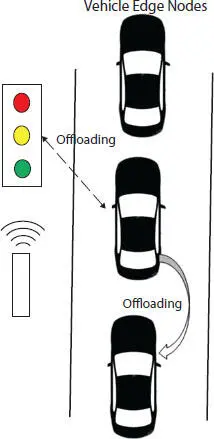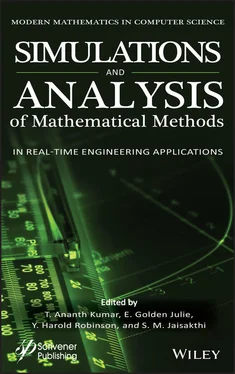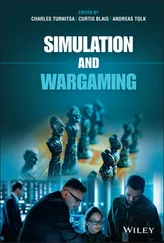In a study, a dynamic computing offloading mechanism is performed. The objective of the study was to reduce the cost of computational resources. Mobile edge computing is considered (MEC). A Deep Learning method, i.e., Deep Supervised Learning (DSL) is considered. A network of a mobile-based computer system is considered. A pre-calculated offloading solution is proposed. A continuous offloading decision problem is formulated as a multi-label classification problem. After experimental analysis, it is inferred that as the exhaustive strategy suffers exponentially with the increase in the “n” fine-grained components.
2.6 Evolutionary Algorithm and Edge Computing
Usually, an evolutionary algorithm is used to solve the NP-hard problem, where solving the problem by a traditional optimization mechanism is impossible. This evolutionary algorithm takes some ransom solution vector from the solution space and tries to get optimal solution by the n number iteration by slowly evolving towards an optional one in each iteration through some cost or reward function. There are many evolutionary algorithms like 1) particle swarm optimization, 2) Genetic algorithm, 3) colony optimization algorithm.
In edge computing, many NP-hard optimization problems could be solved using those evolutionary algorithms.
In Mobile edge computing (MEC), offloading makes low latency and energy-efficient. Security critical tasks involve more computation and take more time. If we offload them, we can achieve a good performance. To minimize task completion time and energy consumption, particle swarm optimization algorithms are proposed [35]. Position-based mapping is carried out to map the particle solution of scheduling. a new slow down particle movement process mechanism is reported in the update particles step of the algorithm. Tthey have proved that the new update mechanism with slow down process achieved better performance compared to that of conventional particle swarm optimization algorithm.
Another offloading mechanism in a mobile edge environment is proposed with a combination of queuing network and genetic algorithm for the mobile edge environment [36]. Predicting the waiting time and service time of the edge server is an important one to make offloading decision. A queuing network model is introduced in this work to model the waiting time and the service time. The waiting times and the service times which are generated from the queuing network are taken as an indirect indicator for the load level of the edge server which is used for the offloading decision by using genetic algorithm. The genetic algorithm is designed to make optimal offloading by minimizing the task response time with the constrain of load level of the edge server and task transmission time from node to edge server. This proposed algorithm outperformed compared to that of particle swarm optimization and traditional round-robin scheduling based offloading in terms of response time.
Using the vehicular network node as an edge node is the latest trend. Figure 2.8shows the vehicle edge network. In Figure 2.8, the roadside sensor node will offload the complex computations to the vehicle computing node. When the vehicle moves, it transfers the load to another vehicle to carry over the computation. Once the computation is finished, it will offload to the roadside sensor node.

Figure 2.8 Offloading in vehicular node.
There are a few research works done to utilize the vehicle as an edge node. An edge computing model for vehicle network applications to improve vehicles’ computational capacity is introduced with a scheduling algorithm using ant colony optimization [37]. This framework makes it possible to use a dynamic vehicle network and the vehicle as an edge service server and improve the connected vehicle application’s computational power. The autonomous organization of vehicle edges is also addressed in this work. The proposed job scheduling on the vehicle edge nodes provided excellent performance in urban and highway scenarios where many vehicles’ presence offers more optimization solutions.
The chapter has given a basic introduction to edge computing with its associated research challenges. The various mathematical models for solving the edge computing problem are also explored. An insight on computational offloading and multiple approaches for computational offloading are discussed. The Markov chain-based decision-making approach is an efficient mathematical approach. The applicability of it for the computational offloading problem in edge computing is also explored. A game theory-based dynamic approach for offload decision making is provided with available solutions. Achieving target QoS in dynamic edge scenarios is another research challenge; the potential solution approaches for them are discussed. Deep learning is widely now applied in many domains to solve NP-hard problems. In edge computing also many NP-hard problems could be solved using a deep learning mechanism. In this chapter, a few DL-based edge computing solutions are discussed. Various offloading mechanism using deep reinforcement learning is presented with associated challenges of offloading. As the second part of the deep learning application, resource allocation in edge computing environments using deep learning mechanisms is also given. Evolutionary-based optimization is another potential solution to solve the multi-objective, multi-constraint optimization problem. A few optimization problems using evolutionary algorithms like ant colony optimization, genetic algorithm, and particle swarm optimization for edge computing are also described.
1. Feng, Jingyun, Zhi Liu, Celimuge Wu, and YushengJi. “AVE: Autonomous vehicular edge computing framework with ACO-based scheduling.” IEEE Transactions on Vehicular Technology 66, no. 12 (2017): 10660-10675.
2. “Computation Offloading.” Wikipedia, 9 Jan. 2021, en.wikipedia.org/wiki/Computation_offloading. Accessed 17 Jan. 2021.
3. Feng, Jingyun, Zhi Liu, Celimuge Wu, and YushengJi. “AVE: Autonomous vehicular edge computing framework with ACO-based scheduling.” IEEE Transactions on Vehicular Technology 66, no. 12 (2017): 10660-10675.
4. Misra, Gourav, et al ., “Internet of things (iot)–a technological analysis and survey on vision, concepts, challenges, innovation directions, technologies, and applications (an upcoming or future generation computer communication system technology).” American Journal of Electrical and Electronic Engineering 4.1 (2016): 23-32.
5. Lee, In, and Kyoochun Lee. “The Internet of Things (IoT): Applications, investments, and challenges for enterprises.” Business Horizons 58, no. 4 (2015): 431-440.
6. Petrolo, Riccardo, Valeria Loscri, and Nathalie Mitton. “Towards a smart city based on the cloud of things, a survey on the smart city vision and paradigms.” Transactions on Emerging Telecommunications Technologies 28, no. 1 (2017): e2931.
7. M. Caprolu, R. Di Pietro, F. Lombardi and S. Raponi, “Edge Computing Perspectives: Architectures, Technologies, and Open Security Issues,” 2019 IEEE International Conference on Edge Computing (EDGE), Milan, Italy , 2019, pp. 116-123, doi: 10.1109/EDGE.2019.00035.
8. Taleb, Tarik, KonstantinosSamdanis, BadrMada, HannuFlinck, Sunny Dutta, and Dario Sabella. “On multi-access edge computing: A survey of the emerging 5G network edge cloud architecture and orchestration.” IEEE Communications Surveys & Tutorials 19, no. 3 (2017): 1657-1681.
Читать дальше













